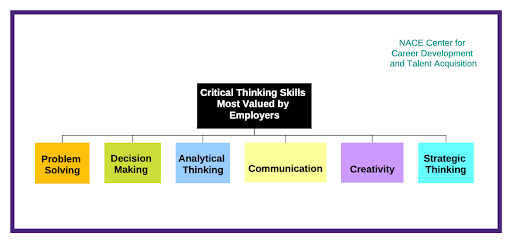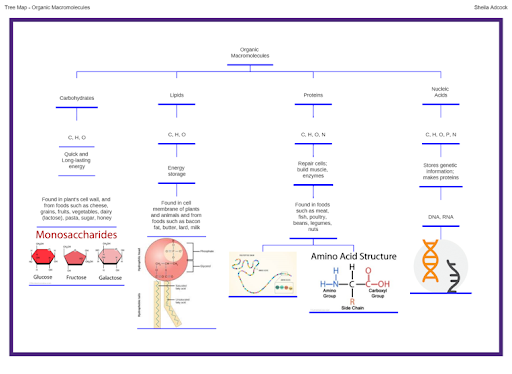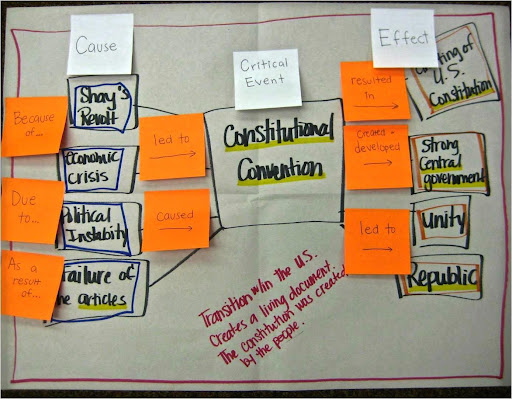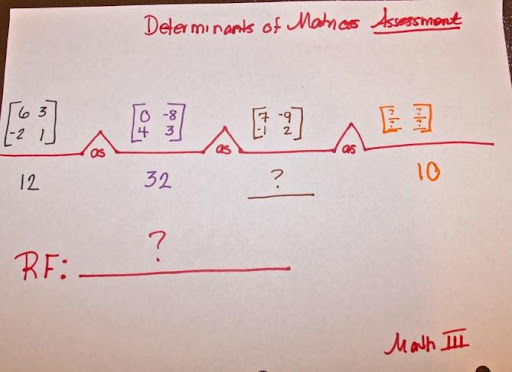Are We Preparing Our Students for Life After High School?
MARCH 13, 2023
Critical thinking skills such as problem solving, analysis, decision-making and strategic planning are increasingly important in today’s complex world. Are graduates leaving high school with the skills they need for college and the workforce? Many universities and employers say no. Here’s why explicitly teaching critical thinking skills is more important than ever…and how high school teachers can infuse critical thinking into their existing curricula.
The Critical Thinking Skills Gap: From K-12 to College and Career
The American Management Association (AMA) and other business groups have stressed the importance of a highly skilled workforce—and not just for so-called “knowledge workers.” Workers in all sectors of the economy benefit from being able to think analytically, come up with creative solutions to challenges, communicate effectively with colleagues and customers, and adapt to new information and workflows. And yet, more than half of executives in an AMA critical skills survey believe their workers are falling short when it comes to critical and creative thinking skills.
Many colleges and universities are also raising the alarm. More than half of students enter college academically unprepared in one or more areas, and the college dropout rate is more than 40%. While there are many reasons that students may leave an undergraduate program, students who are unprepared for the academic rigor and critical thinking required in college-level courses are much more likely to leave without a degree. In fact, longitudinal studies suggest that critical thinking skills are a better predictor of academic success than general cognitive ability (i.e., IQ).
This is an important finding because, unlike IQ, critical thinking skills can be taught. We can help prepare students of all backgrounds and ability levels for success after high school by explicitly teaching critical thinking skills and providing opportunities for students to hone and develop these skills.
What Do We Mean by Critical Thinking?
Critical thinking is not a single thing, but rather a collection of cognitive skills and habits that allow us to engage with ideas in complex ways, develop novel solutions for problems, and analyze, evaluate and synthesize information from multiple sources. The Foundation for Critical Thinking defines it as “the intellectually disciplined process of actively and skillfully conceptualizing, applying, analyzing, synthesizing, and/or evaluating information gathered from, or generated by, observation, experience, reflection, reasoning, or communication, as a guide to belief and action.” Frameworks such as Bloom’s Taxonomy rank thinking skills, with simple recall and understanding at the bottom and more complex skills such as application, analysis, evaluation and creation at the top. In truth, navigating today’s complex world often requires us to do all of these things, all at once.
According to various studies and surveys, employers consistently rank the following critical thinking skills as some of the most important for success in the workplace.
- Problem Solving: The ability to identify, analyze, and solve problems, including the ability to think creatively and generate innovative solutions.
- Decision Making: The ability to evaluate evidence and make informed decisions by considering multiple perspectives, weighing different options, and evaluating data and evidence.
- Analytical Thinking: The ability to break down complex information into its component parts and analyze each part separately to identify patterns and relationships and evaluate information critically.
- Communication: The ability to communicate ideas clearly and concisely, listen actively to others, and collaborate effectively with team members.
- Creativity: The ability to generate new ideas and approaches to problems and approach problems from different angles.
Strategic Thinking: The ability to think long-term and develop plans and strategies for achieving goals, including the ability to anticipate problems and opportunities and to develop contingency plans for unexpected challenges.

Why Aren’t We Teaching Critical Thinking?
In spite of the clear importance of critical thinking skills for college and career success, few teachers explicitly teach these skills at the secondary or postsecondary levels. While a large majority of teachers believe that critical thinking skills are one of the top three indicators for college and career readiness, only 39% of 8th-grade teachers emphasized critical thinking and deductive reasoning skills in their classrooms, and only 29% of high school graduates say they were taught critical thinking skills in school. At the college level, fewer than one in ten professors say they are explicitly teaching critical thinking.
What accounts for the gap between belief and action? There are several reasons that critical thinking may be neglected at the secondary level.
- Curriculum Constraints: High school teachers are under tremendous pressure to cover course content and standards and have little time to deviate from an already-packed scope and sequence.
- Assessment Demands: In spite of attempts to reform assessments, many still reward rote memorization of facts and figures rather than complex critical thinking skills.
Lack of Training: Secondary teachers have to be experts in their own content areas. Few have received explicit training in teaching critical thinking skills.
Critical Thinking vs. Course Content: Why Not Both?
Most researchers believe that critical thinking skills can (and must) be explicitly taught. Many high school teachers fear that time spent teaching critical thinking will take away from the already limited time they have to cover the curriculum. In fact, the exact opposite is true. Especially at the secondary level, critical thinking skills must be taught in tandem with academic content. Daniel Willingham, a professor of psychology at the University of Virginia, argues that students need to be taught discipline-specific critical thinking skills in the context of the content they are learning.
That’s where having a clear framework for critical thinking like Thinking Maps can help busy high school teachers. Thinking Maps are designed by nature to be used with and in support of academic content, not as extra “busy work” or games to teach skills in isolation. They are not something extra for teachers to do, but a tool that helps students develop cognitive skills and deepen their understanding of academic content at the same time.
Thinking Maps are a powerful and flexible tool that can be adapted for use across academic disciplines. They help secondary students develop both general and discipline-specific critical thinking skills.
For example, classification is an important skill in science.

History students need to be able to analyze the causes and effects of events.

Analyzing how different factors are related is an important math skill.

As students gain proficiency in using Thinking Maps, they are learning how to analyze, organize and evaluate information in a variety of ways. Each of the eight Thinking Maps corresponds to a specific type of cognition: defining, describing, classifying, compare and contrast, cause and effect, process or sequence, part-to-whole, and analogies. As students apply them within the context of specific subject areas, they are gaining discipline-specific analytical skills.
Teaching critical thinking and covering course-specific content are not mutually exclusive aims—especially at the high school level. With Thinking Maps, teachers can do both. Want to learn how to infuse critical thinking into the curriculum at your school? Check out the training calendar for upcoming virtual training opportunities, or contact your Thinking Maps representative to learn more.
Further Reading
On the blog:
- Reading for Understanding: Science and Social Studies
- Mastering Mathematical Thinking
- To Get Better Thinking, Ask Better Questions
- What Does it Mean to Teach Thinking?
- We’re Increasing Rigor…But Are We Preparing Our Students?
Webinar recordings:
Also check out our upcoming webinars.
For Thinking Maps Learning Community (TMLC) subscribers only:
Can’t access these Navigator articles? Talk to your Thinking Maps representative to subscribe.
Continue Reading
November 15, 2024
Critical thinking is a cornerstone of success in all aspects of life—not only in academics and on the job, but also in personal decision-making, relationships, and citizenship. And yet, critical thinking skills are rarely explicitly taught. Student-directed activities grounded in real-world problems and applications can help students develop the critical thinking skills they need for everyday life.
May 15, 2023
College and career readiness includes academic, social-emotional and cognitive skills. Conley's Key Cognitive Strategies provide a framework for success.
July 12, 2021
You’ve probably heard the expression “failure to plan is planning to fail.” Nowhere is this more true than when it comes to teaching and learning.
June 14, 2021
Professional development should model the best practices for teaching that we use in the classroom. That means PD should be designed to actively engage teachers in relevant, rigorous learning.